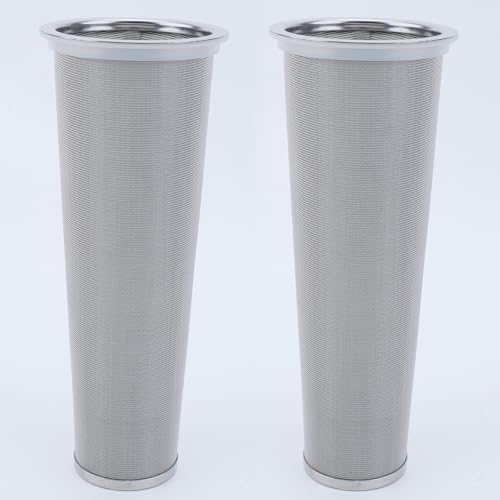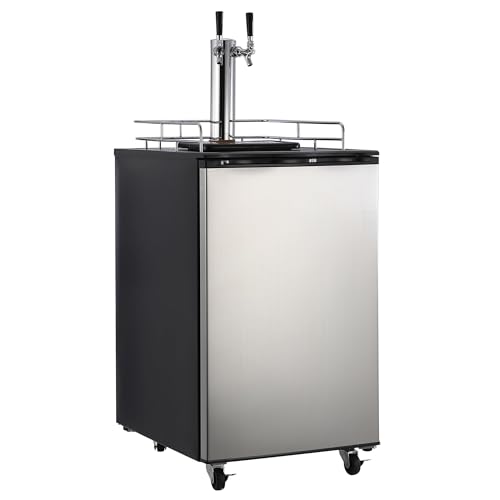What you need is a flowmeter not just a paddle type indicator if you want to know what the flow rate through the mash is. Flow rates above 1 gpm usally lead to compaction and flow problems, that is why I use a flow meter with max of 1 gpm. Sparge and runoff rates should be such that runoff and sparge times are at least 30 - 45 minutes for max efficiency. Coarsness of crush is a big factor to recirculation rates and efficiency, it is something that one has to work with to get a balance between flow and efficiency.
You are using an out of date browser. It may not display this or other websites correctly.
You should upgrade or use an alternative browser.
You should upgrade or use an alternative browser.
Flowmeters
- Thread starter korndog
- Start date

Help Support Homebrew Talk:
This site may earn a commission from merchant affiliate
links, including eBay, Amazon, and others.
I've read the theories and agree how a high flow rate could lead to compaction in a lot of setups, but it has just never been a problem for me - and I've never really tried to balance flow. I set the valve to around 50% and average 80% efficiency - can't complain.
My only concern is to know the wort is flowing, but I honestly don't even need that as all I have to do is give the silicone hose on the pump output a quick pinch to tell... I guess it just seems cool to have an at a glance visual that all is well.
My only concern is to know the wort is flowing, but I honestly don't even need that as all I have to do is give the silicone hose on the pump output a quick pinch to tell... I guess it just seems cool to have an at a glance visual that all is well.
WBC
Well-Known Member
All the posts so far are flow indicators not flowmeters. A flow meter has a ball in a cone shaped interior at the fluid pushes the ball up the taper so it has more room to flow and the ball is sitting in this flow at the height that its weight can attain. There are graduations that have been calibrated along this taper showing the quantity per unit of time. This model has too big of flow. I need a meter that would show in pints/milliters per minute.
http://www.coleparmer.com/catalog/large_image.asp?img=3246108.jpg
http://www.coleparmer.com/catalog/Product_view.asp?sku=3246000&pfx=K&referred_id=2268
http://www.coleparmer.com/catalog/large_image.asp?img=3246108.jpg
http://www.coleparmer.com/catalog/Product_view.asp?sku=3246000&pfx=K&referred_id=2268
Are you looking for this kind of a setup, here is a link to a picture of the flowmeters on the old system. http://picasaweb.google.com/kevin.ladue/Flowmeters/photo#5237048447683664962
WBC
Well-Known Member
Are you looking for this kind of a setup, here is a link to a picture of the flowmeters on the old system. http://picasaweb.google.com/kevin.ladue/Flowmeters/photo#5237048447683664962
I sure am. I wanted pyrex glass because I was afraid the heat would ruin the plastic. Are you using these plastic flowmeters for sparging flow? My flow needed is .933 quart per minute or 14 gallons an hour. In pints I would want to be able to flow from 1 pint per minute up to 25 pints min. If in Milliliters, from 500 ML to 10,000 ML. As long as the flowmeter covers this range it would fit my needs.
The flowmeters have not shown any signs of distress after 4 years, max temp on pump side was 175 deg on the pumped wort side, the boler side is cold water. Flow rate scale on the flowmeters are 60 gph on pumped wort circuit and 12 gph on boiler feed water circuit. Something to keep in mind is the pressure drop across the flowmeter, head pressure in a gravity system may not be enough to reach desired flow rate with out help from a pump. When the system is in sparge mode both flows are set to 11 gph and level stays fairly steady in the mash tun until sparge water runs out.
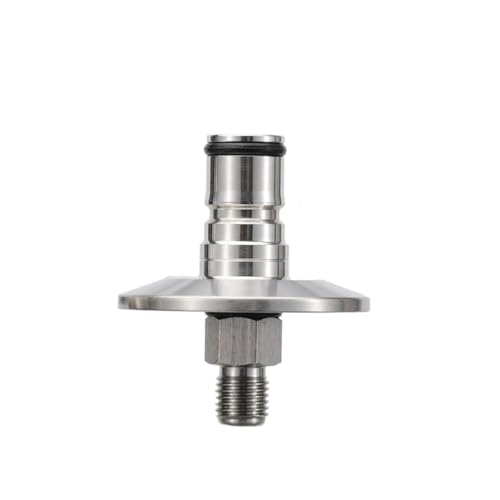
$53.24
1pc Hose Barb/MFL 1.5" Tri Clamp to Ball Lock Post Liquid Gas Homebrew Kegging Fermentation Parts Brewer Hardware SUS304(Gas MFL)
yunchengshiyanhuqucuichendianzishangwuyouxiangongsi

$33.99 ($17.00 / Count)
$41.99 ($21.00 / Count)
2 Pack 1 Gallon Large Fermentation Jars with 3 Airlocks and 2 SCREW Lids(100% Airtight Heavy Duty Lid w Silicone) - Wide Mouth Glass Jars w Scale Mark - Pickle Jars for Sauerkraut, Sourdough Starter
Qianfenie Direct

$53.24
1pc Hose Barb/MFL 1.5" Tri Clamp to Ball Lock Post Liquid Gas Homebrew Kegging Fermentation Parts Brewer Hardware SUS304(Gas Hose Barb)
Guangshui Weilu You Trading Co., Ltd

$10.99 ($31.16 / Ounce)
Hornindal Kveik Yeast for Homebrewing - Mead, Cider, Wine, Beer - 10g Packet - Saccharomyces Cerevisiae - Sold by Shadowhive.com
Shadowhive

$176.97
1pc Commercial Keg Manifold 2" Tri Clamp,Ball Lock Tapping Head,Pressure Gauge/Adjustable PRV for Kegging,Fermentation Control
hanhanbaihuoxiaoshoudian

$30.98
Five Star - 6022b_ - Star San - 32 Ounce - High Foaming Sanitizer
Great Fermentations of Indiana

$82.50
Wilbur Curtis Brew Cone Assembly with Splash Pocket, High Volume - Commercial-Grade Brew Basket - WC-3422 (Each)
Global Commercial Parts

$58.16
HUIZHUGS Brewing Equipment Keg Ball Lock Faucet 30cm Reinforced Silicone Hose Secondary Fermentation Homebrew Kegging Brewing Equipment
xiangshuizhenzhanglingfengshop

$20.94
$29.99
The Brew Your Own Big Book of Clone Recipes: Featuring 300 Homebrew Recipes from Your Favorite Breweries
Amazon.com
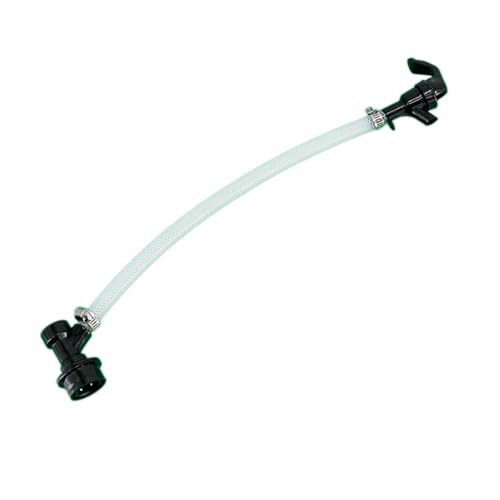
$22.00 ($623.23 / Ounce)
AMZLMPKNTW Ball Lock Sample Faucet 30cm Reinforced Silicone Hose Secondary Fermentation Homebrew Kegging joyful
无为中南商贸有限公司

$39.22 ($39.22 / Count)
Brewer's Best Home Brew Beer Ingredient Kit - 5 Gallon (Mexican Cerveza)
Home Brew Ohio
WBC
Well-Known Member
The flowmeters have not shown any signs of distress after 4 years, max temp on pump side was 175 deg on the pumped wort side, the boler side is cold water. Flow rate scale on the flowmeters are 60 gph on pumped wort circuit and 12 gph on boiler feed water circuit. Something to keep in mind is the pressure drop across the flowmeter, head pressure in a gravity system may not be enough to reach desired flow rate with out help from a pump. When the system is in sparge mode both flows are set to 11 gph and level stays fairly steady in the mash tun until sparge water runs out.
I am using a pump anyway so flowmeters will work great. I think it will be a great tool for sparging rate although holding a graduated container for 1 minute under the outlet will give you a good idea of flow the flowmeter is much easier to use.
Similar threads
- Replies
- 10
- Views
- 1K
- Replies
- 28
- Views
- 2K
- Replies
- 42
- Views
- 3K
























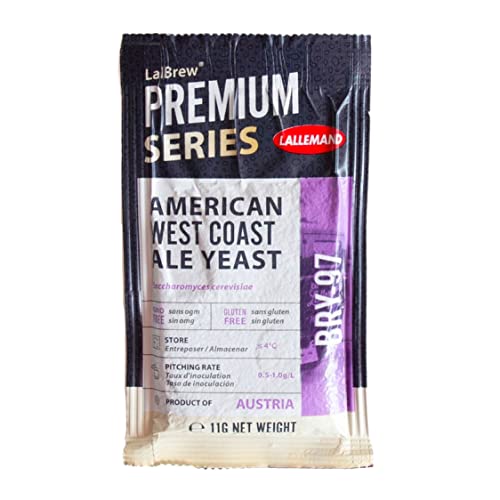













![Craft A Brew - Safale S-04 Dry Yeast - Fermentis - English Ale Dry Yeast - For English and American Ales and Hard Apple Ciders - Ingredients for Home Brewing - Beer Making Supplies - [1 Pack]](https://m.media-amazon.com/images/I/417FujUfrWL._SL500_.jpg)


